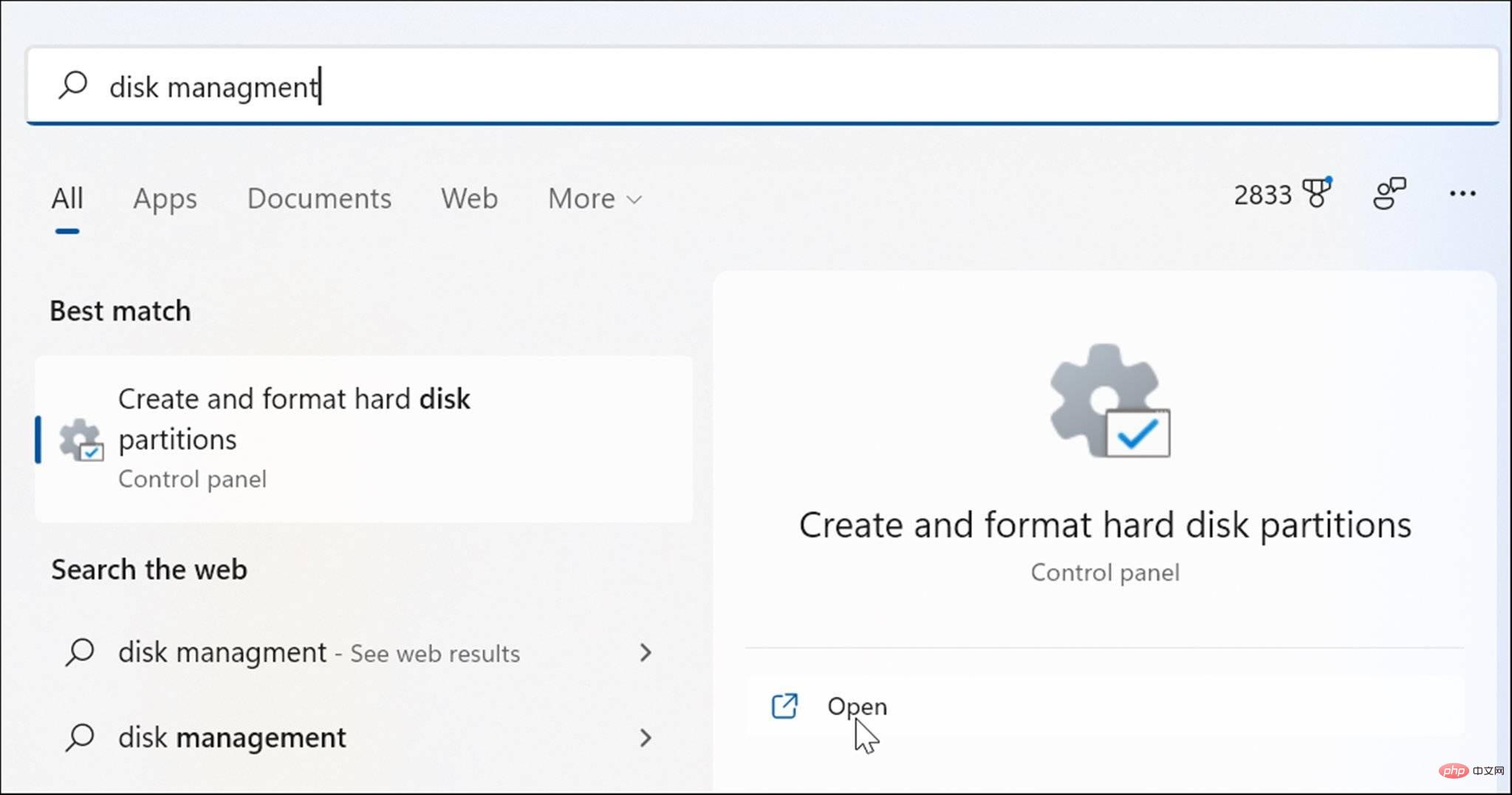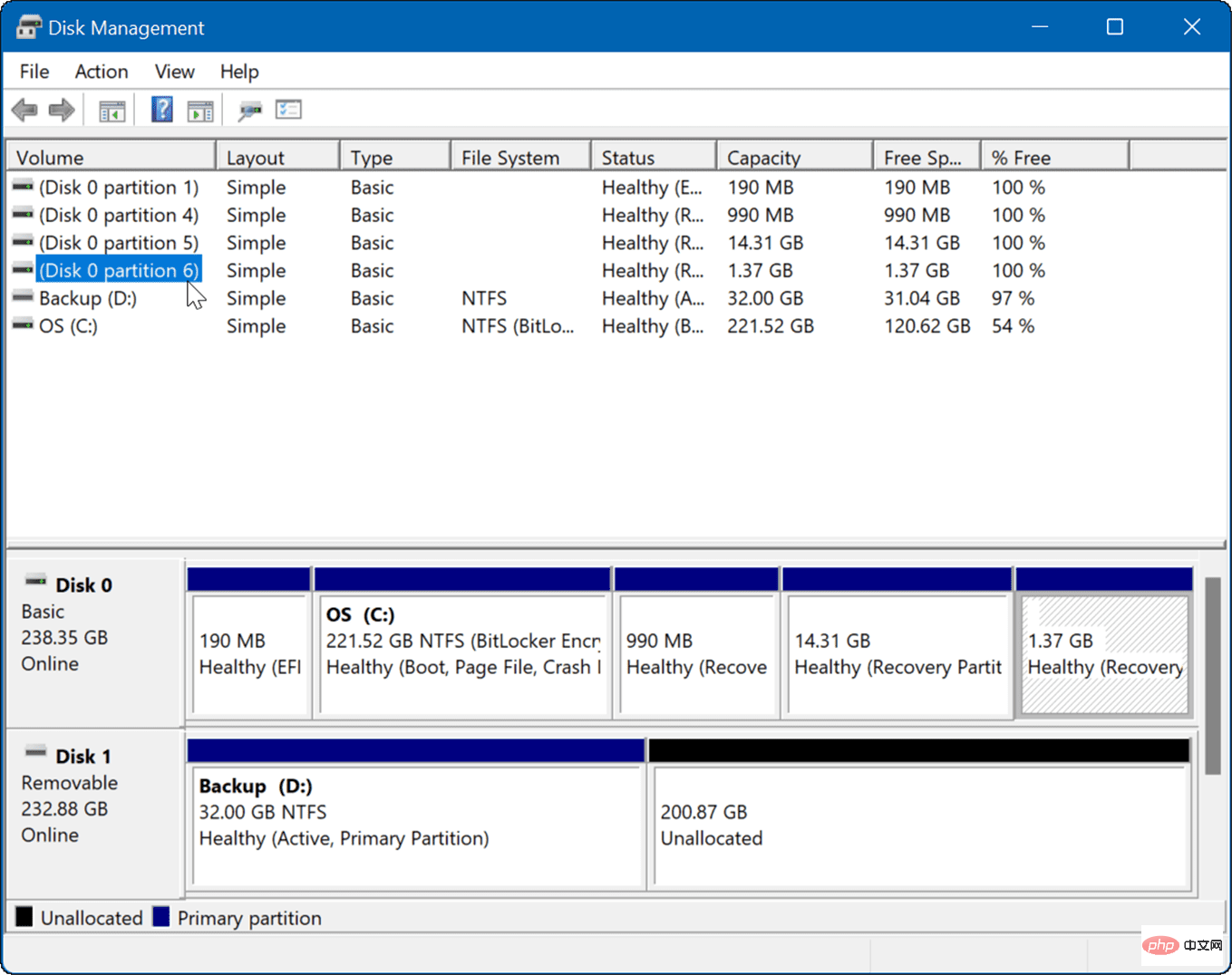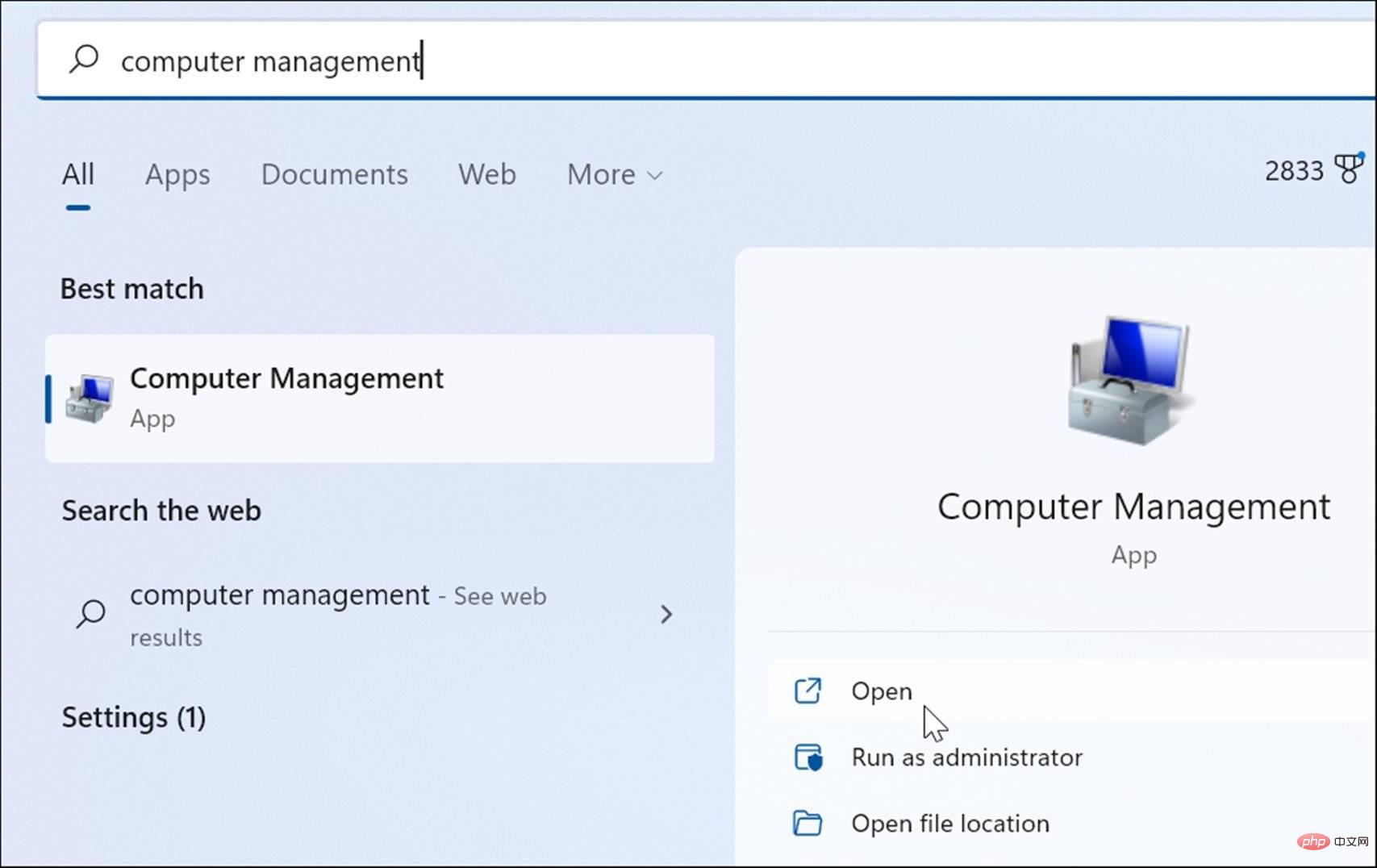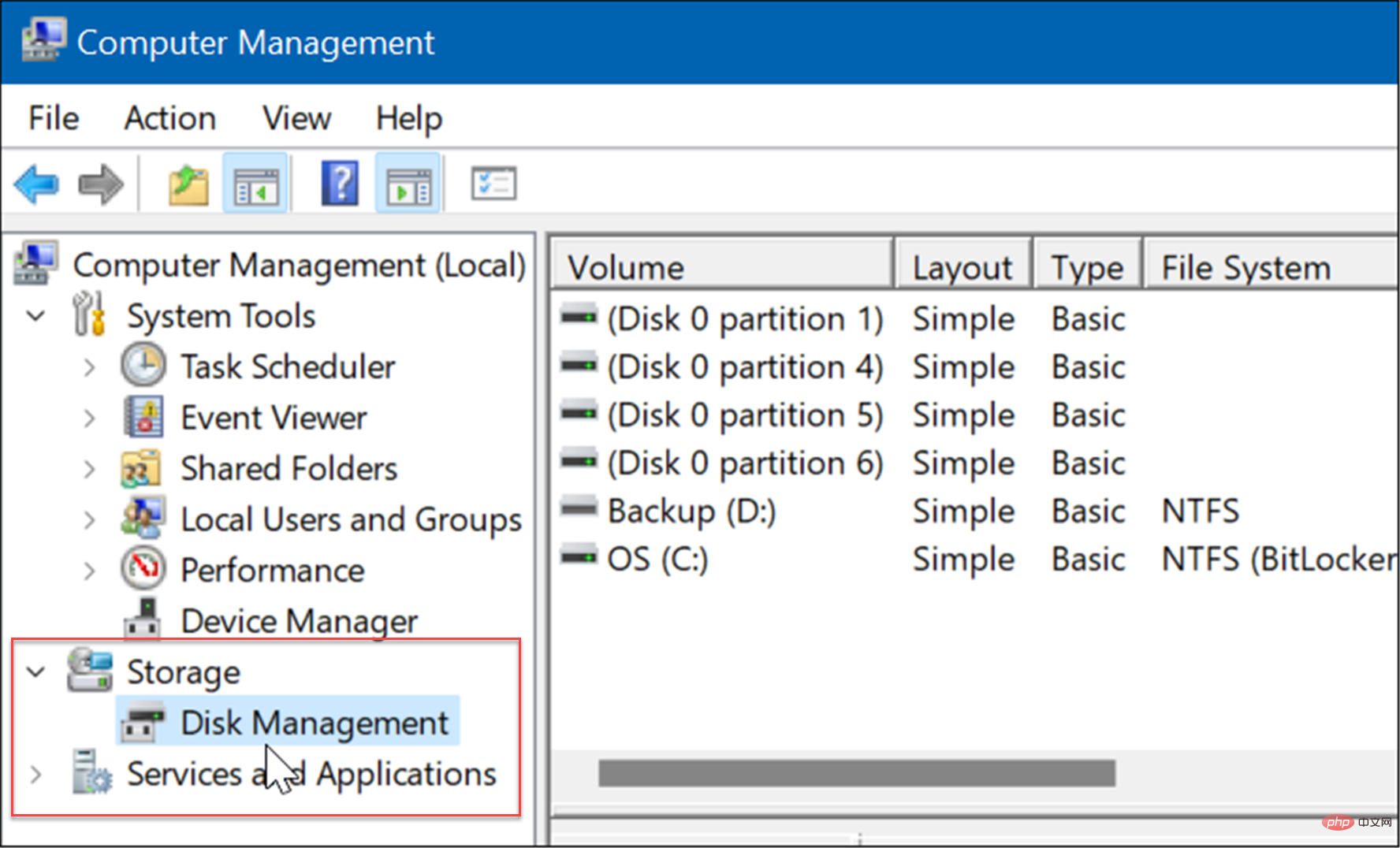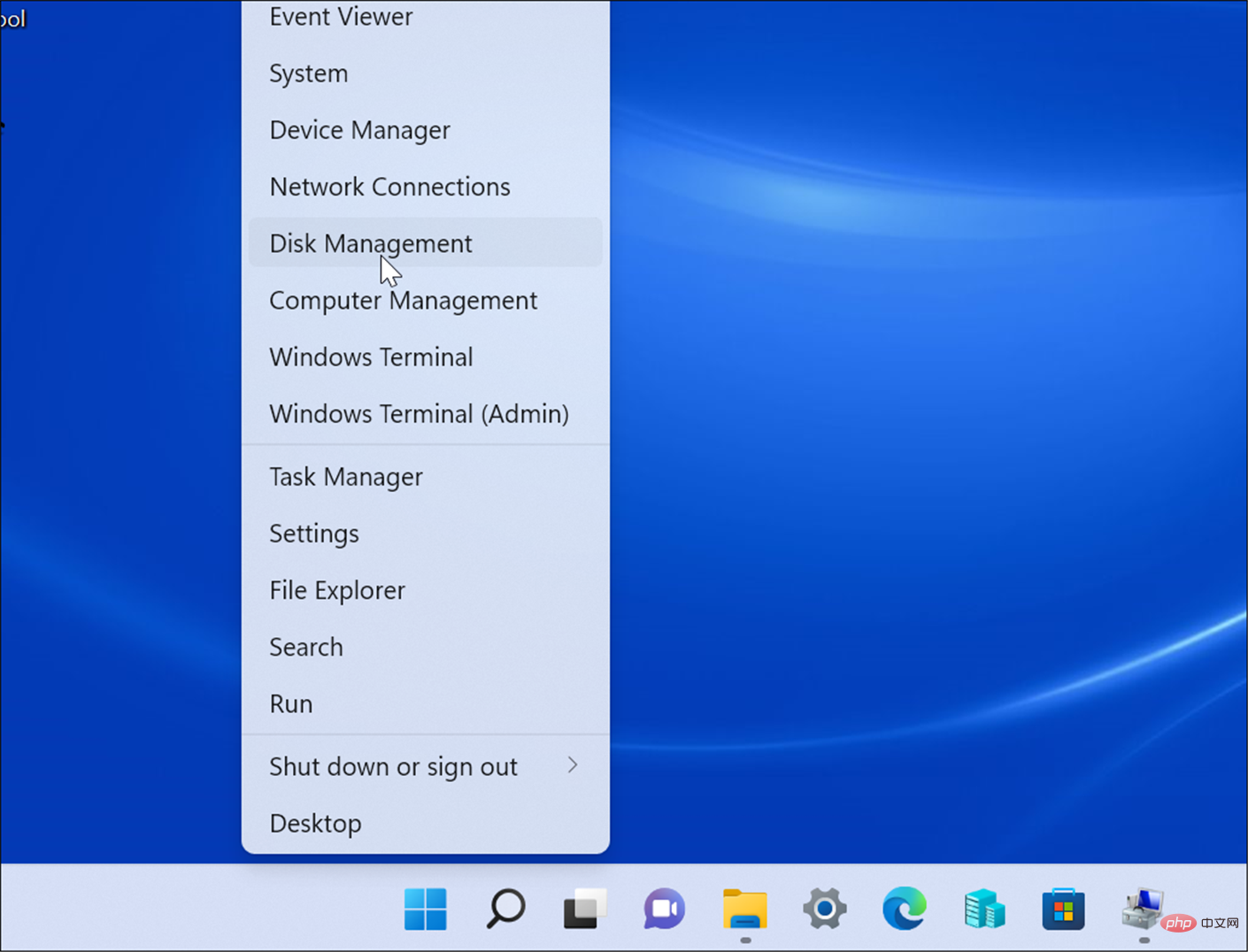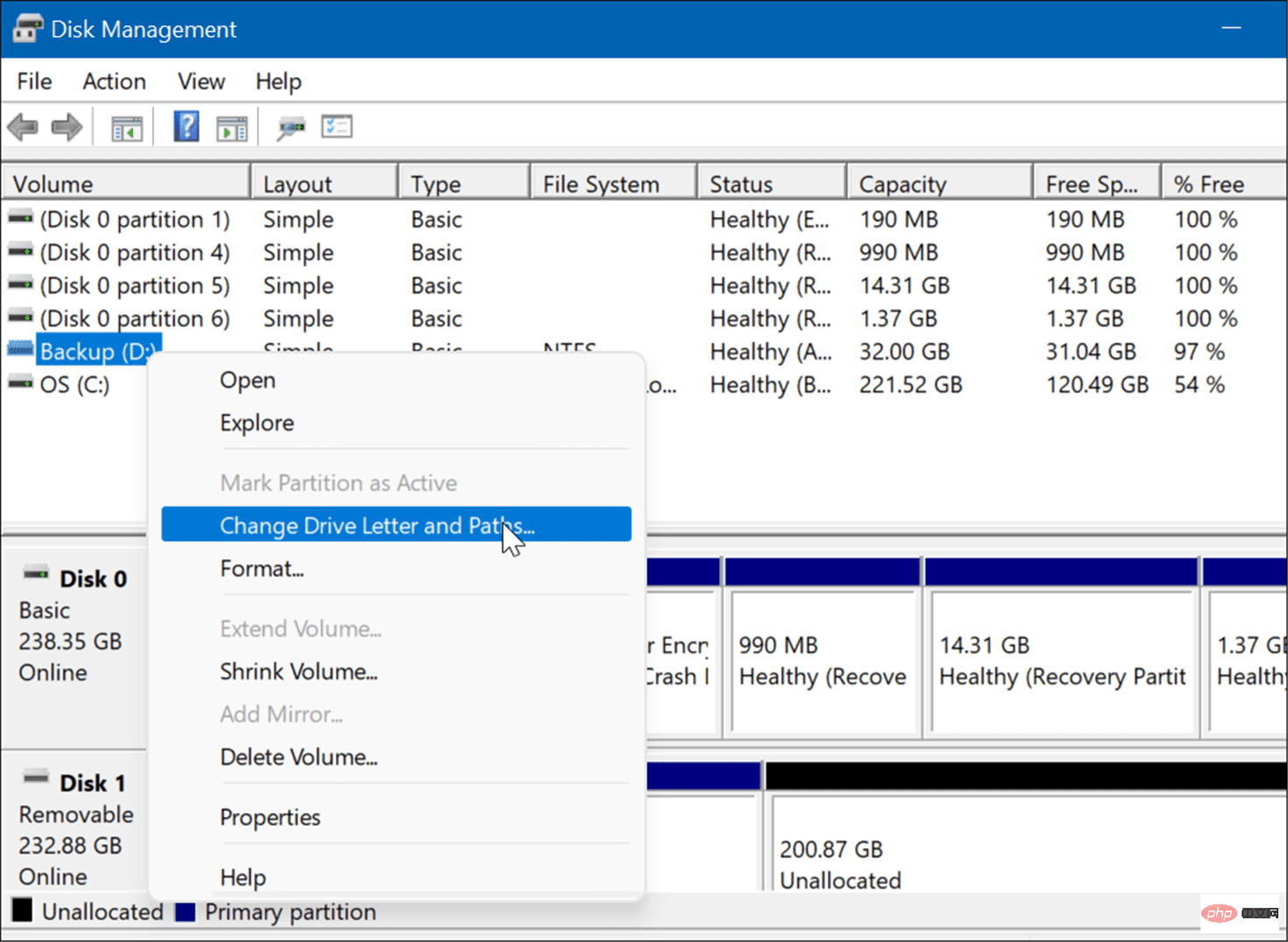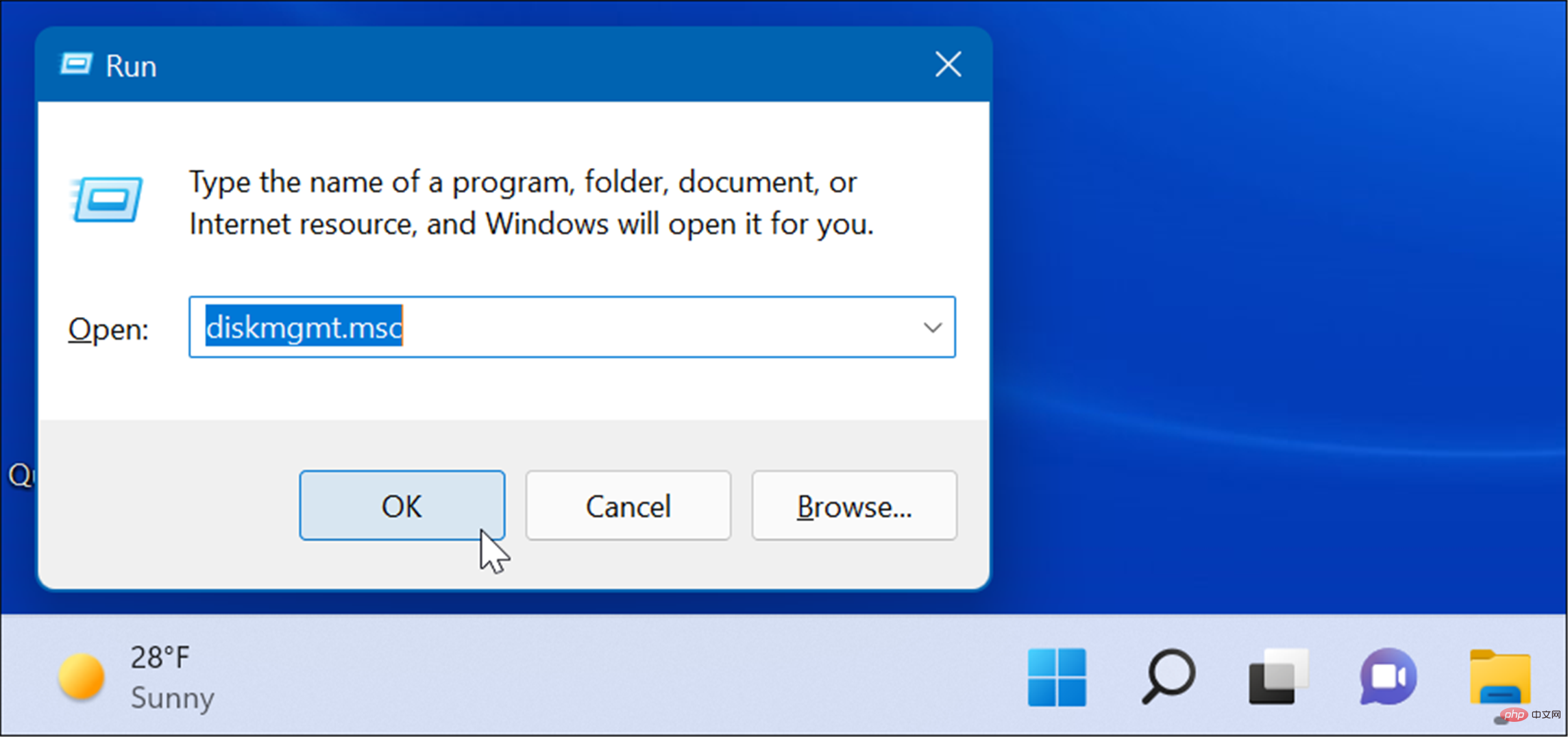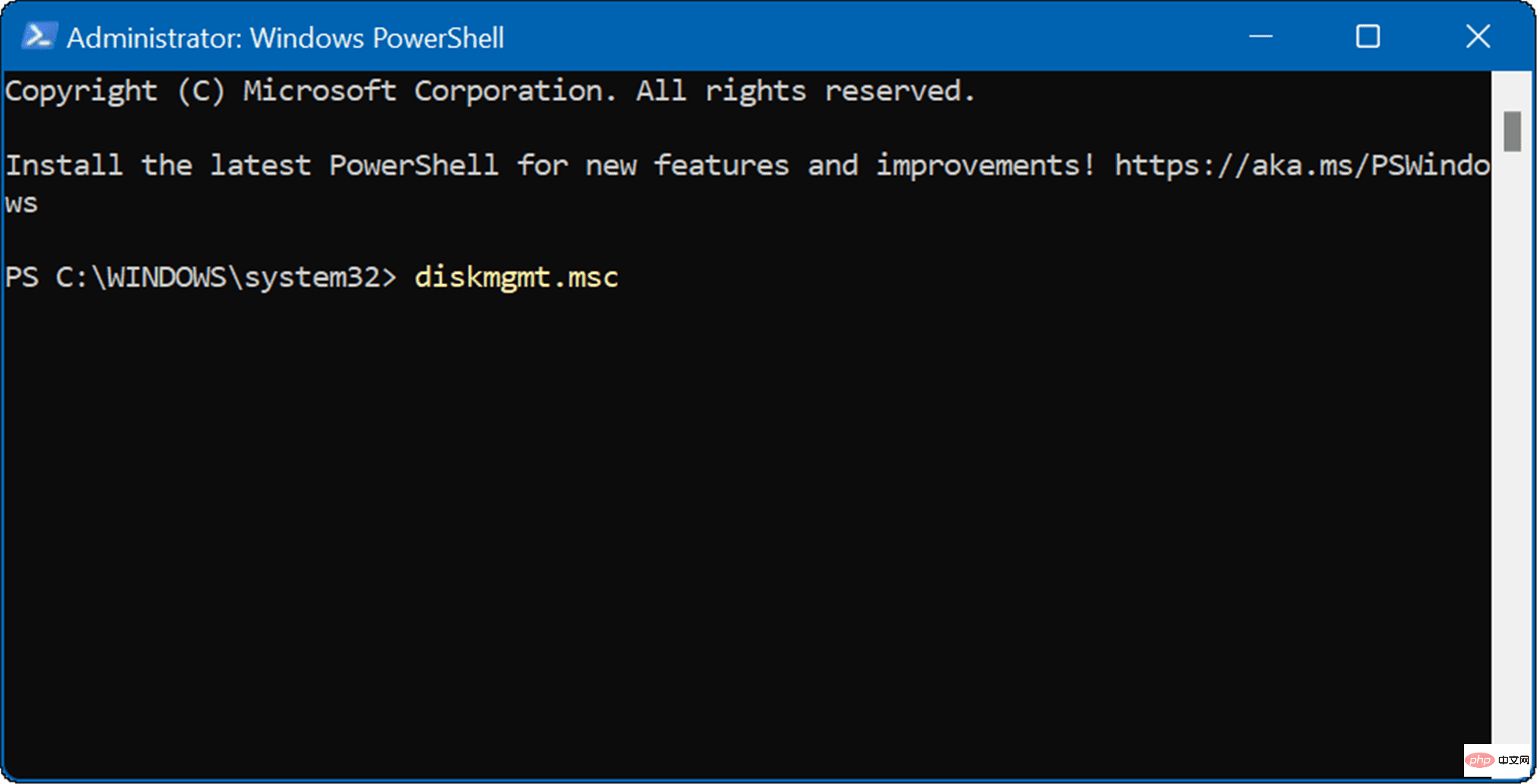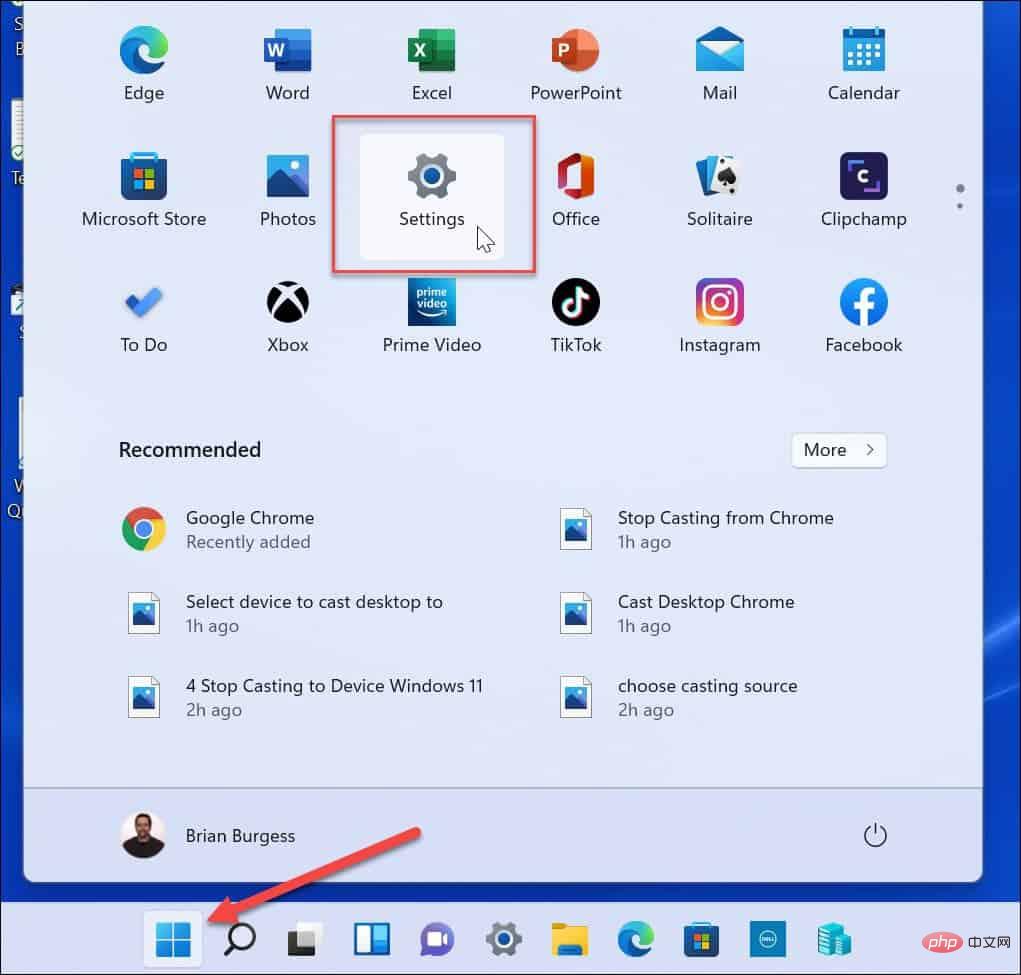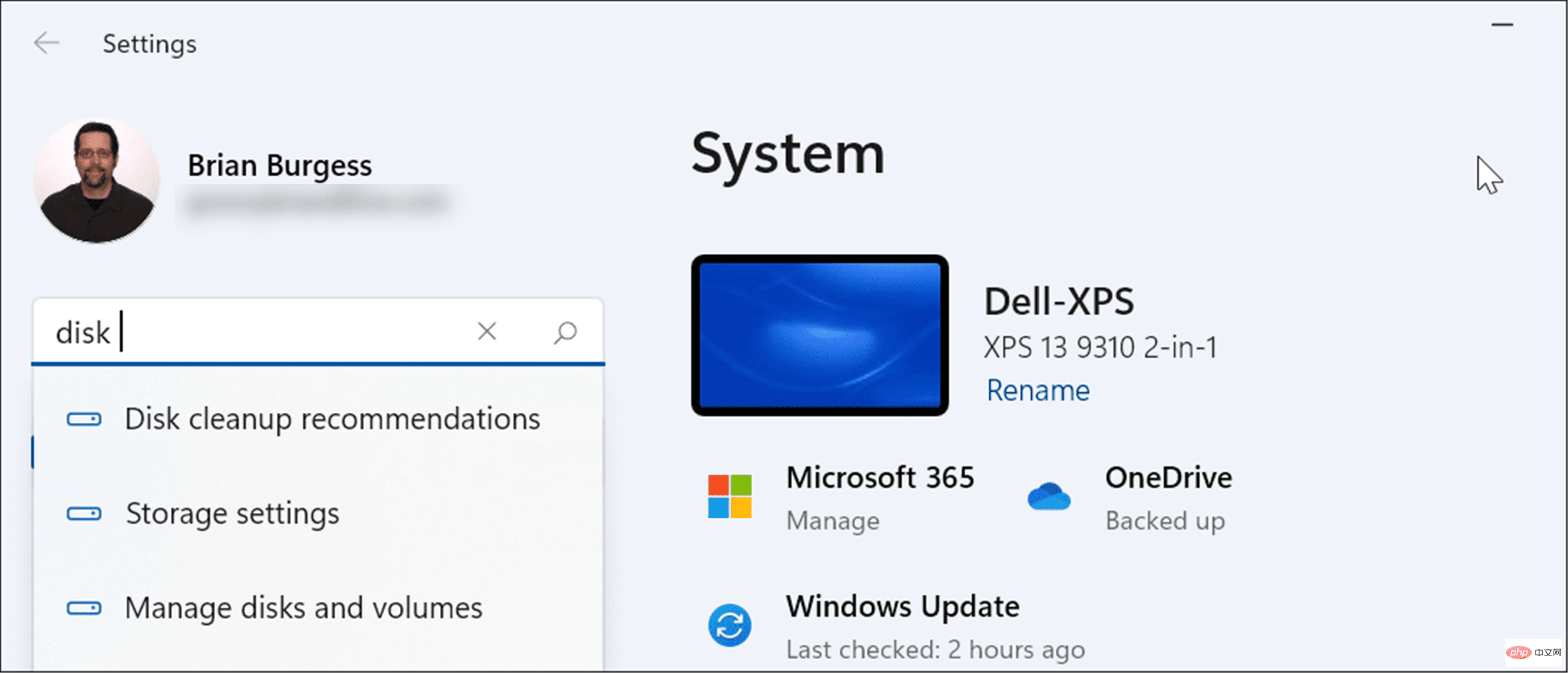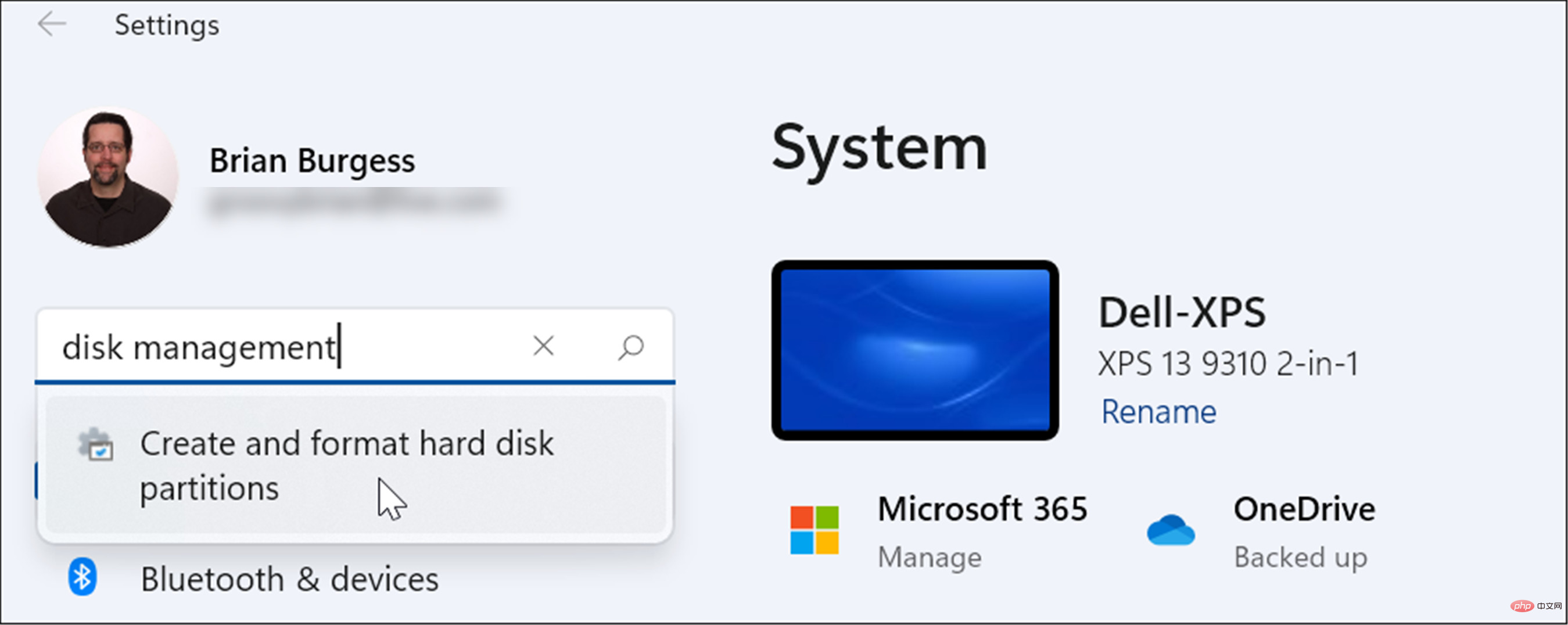6 Ways to Turn on Disk Management on Windows 11
If you want to create and resize partitions, initialize hard drives, change drive letters, etc. on Windows 11, you need to use the Disk Management tool.
You can use this tool in a variety of ways, as well as open it. If you want to speed up your workflow, here are six different ways to turn on Disk Management in Windows 11.
1. Search Disk Management
To avoid clicking through the menu, you can search for Disk Management and open it directly.
To open Disk Management using the search bar in the Start menu, use the following steps:
- Click the Start button or press the Windows key.
- In the Start menu, type Disk Management.
-
Select the Create and format hard disk partitions option in the Best Matches section.

- This will open the Disk Management utility directly on the desktop.

2. Launch through Computer Management
Another way to open Disk Management is to use the Computer Management tool.
To start Disk Management using Computer Management:
- Click the Start button Open the Start menu.
- Type Computer Management and select the top result.

- When the "Computer Management" window appears, expand the "Storage" section from the left column. Under the Storage section, click Disk Management.
-
Disk Management Utilities will open in Computer Management Utilities.

3. Open Disk Management from the Power User Menu
Available items on the Power User Menu (e.g. Windows key X ) has changed slightly in Windows 11. However, you can right-click the Start button or press the Windows key X to launch it and access Disk Management.
Use the following steps to launch Disk Management from the Power User menu:
- Use the keyboard shortcut Windows key XLaunch the menu and click Disk Management.

- The Disk Management tool will start and you can start the tasks you need to complete, such as moving the Windows 10 installation to a larger drive

4. From Run Dialog Start Disk Management
Another option available to you is to launch Disk Management from the Runmenu.
To start Disk Management from the run line:
- Click the keyboard shortcut Windows key R to launch " Run"dialog box.
- While running, type msc and click OK or press Enter.

- The Disk Management utility will launch on your desktop and be ready for use.

5. Launch Disk Management from PowerShell
If you prefer the command line approach, you can open Disk Management from the PowerShell terminal. Use the following steps to launch it:
- Click the Windows key and enter powershell.
- Hover over the top result and selectRun as administrator from the right.

- Now, in the terminal, type diskmgmt.msc and press Enter.

- That’s all. The Disk Management utility will open on the desktop for you to use.

6. Open Disk Management from Settings
You can also open Disk Management directly from Settings - it's just named differently.
Use the following steps to open Disk Management directly from Windows 11 Settings:
- Click the Start button and select the Settings icon . Alternatively, use the keyboard shortcut Windows key IOpen Settings

- When the Settings app opens, under your account icon Type Disk Management in the search field below the top.

- After typing disk management, click the Create and format hard drive partition option in the results. The Disk Management tool will open immediately.

Using Disk Management on Windows 11
The Disk Management tool is a very useful tool to use on Windows 11. It allows you to quickly resize or delete partitions and change new drive letters. However, you can also change the drive letter on Windows 11 using the Settings app.
Windows 11 has other useful built-in tools when it comes to maintaining your drives. For example, you can enable and configure Storage Sense to keep your drives clean. You can also use the Cleanup Suggestions tool to reclaim drive space on Windows 11.
The above is the detailed content of 6 Ways to Turn on Disk Management on Windows 11. For more information, please follow other related articles on the PHP Chinese website!

Hot AI Tools

Undresser.AI Undress
AI-powered app for creating realistic nude photos

AI Clothes Remover
Online AI tool for removing clothes from photos.

Undress AI Tool
Undress images for free

Clothoff.io
AI clothes remover

Video Face Swap
Swap faces in any video effortlessly with our completely free AI face swap tool!

Hot Article

Hot Tools

Notepad++7.3.1
Easy-to-use and free code editor

SublimeText3 Chinese version
Chinese version, very easy to use

Zend Studio 13.0.1
Powerful PHP integrated development environment

Dreamweaver CS6
Visual web development tools

SublimeText3 Mac version
God-level code editing software (SublimeText3)

Hot Topics
 1662
1662
 14
14
 1418
1418
 52
52
 1311
1311
 25
25
 1261
1261
 29
29
 1234
1234
 24
24
 What is the reason why PS keeps showing loading?
Apr 06, 2025 pm 06:39 PM
What is the reason why PS keeps showing loading?
Apr 06, 2025 pm 06:39 PM
PS "Loading" problems are caused by resource access or processing problems: hard disk reading speed is slow or bad: Use CrystalDiskInfo to check the hard disk health and replace the problematic hard disk. Insufficient memory: Upgrade memory to meet PS's needs for high-resolution images and complex layer processing. Graphics card drivers are outdated or corrupted: Update the drivers to optimize communication between the PS and the graphics card. File paths are too long or file names have special characters: use short paths and avoid special characters. PS's own problem: Reinstall or repair the PS installer.
 How to speed up the loading speed of PS?
Apr 06, 2025 pm 06:27 PM
How to speed up the loading speed of PS?
Apr 06, 2025 pm 06:27 PM
Solving the problem of slow Photoshop startup requires a multi-pronged approach, including: upgrading hardware (memory, solid-state drive, CPU); uninstalling outdated or incompatible plug-ins; cleaning up system garbage and excessive background programs regularly; closing irrelevant programs with caution; avoiding opening a large number of files during startup.
 How to solve the problem of loading when PS is always showing that it is loading?
Apr 06, 2025 pm 06:30 PM
How to solve the problem of loading when PS is always showing that it is loading?
Apr 06, 2025 pm 06:30 PM
PS card is "Loading"? Solutions include: checking the computer configuration (memory, hard disk, processor), cleaning hard disk fragmentation, updating the graphics card driver, adjusting PS settings, reinstalling PS, and developing good programming habits.
 How to set color mode for export PDF on PS
Apr 06, 2025 pm 05:09 PM
How to set color mode for export PDF on PS
Apr 06, 2025 pm 05:09 PM
The secret to export PDFs with accurate colors: choose color mode according to the purpose: RGB for network display, CMYK for professional printing. Check Embed Profiles when exporting to maintain color consistency. Adjust compression settings to balance image quality and file size. For PDFs for networks, use RGB mode; for PDFs for printing, use CMYK mode.
 Does mysql need the internet
Apr 08, 2025 pm 02:18 PM
Does mysql need the internet
Apr 08, 2025 pm 02:18 PM
MySQL can run without network connections for basic data storage and management. However, network connection is required for interaction with other systems, remote access, or using advanced features such as replication and clustering. Additionally, security measures (such as firewalls), performance optimization (choose the right network connection), and data backup are critical to connecting to the Internet.
 Is slow PS loading related to computer configuration?
Apr 06, 2025 pm 06:24 PM
Is slow PS loading related to computer configuration?
Apr 06, 2025 pm 06:24 PM
The reason for slow PS loading is the combined impact of hardware (CPU, memory, hard disk, graphics card) and software (system, background program). Solutions include: upgrading hardware (especially replacing solid-state drives), optimizing software (cleaning up system garbage, updating drivers, checking PS settings), and processing PS files. Regular computer maintenance can also help improve PS running speed.
 Is PS slow loading related to other programs that are running?
Apr 06, 2025 pm 06:03 PM
Is PS slow loading related to other programs that are running?
Apr 06, 2025 pm 06:03 PM
The secrets to mastering Office software include: understanding different versions and platforms, correctly installing and configuring, proficient in using the software interface, in-depth understanding of feature operations, application collaboration and sharing functions, utilizing templates and styles, mastering advanced skills, and solving common problems. In addition, you need to choose a version that suits your needs, make good use of templates and styles, develop backup habits, and learn shortcut keys and advanced techniques to improve efficiency.
 Can mysql run on Windows
Apr 08, 2025 pm 01:54 PM
Can mysql run on Windows
Apr 08, 2025 pm 01:54 PM
Running MySQL on Windows is feasible, but challenges such as port conflicts, permission issues, and environment variable settings need to be considered. Installation issues can be solved by customizing configuration files, adjusting user permissions, and setting environment variables correctly. Additionally, the appropriate storage engine should be selected, tweaked configuration files, and SSDs should be used to optimize performance.



